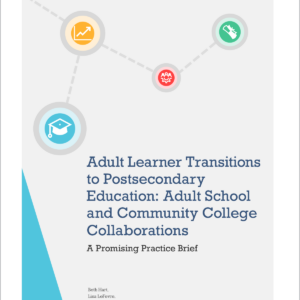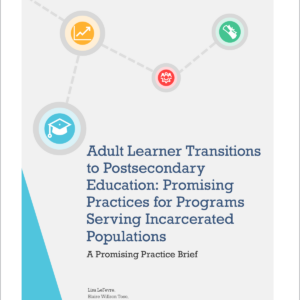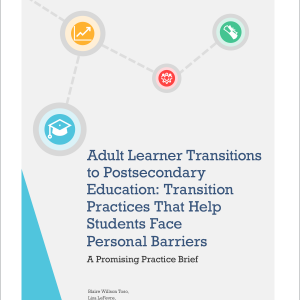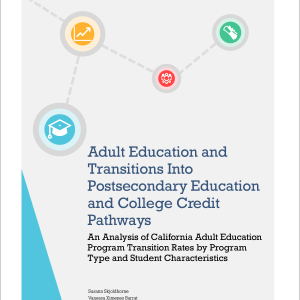Who Transitions From Adult Education to Postsecondary Programs?
Posted on
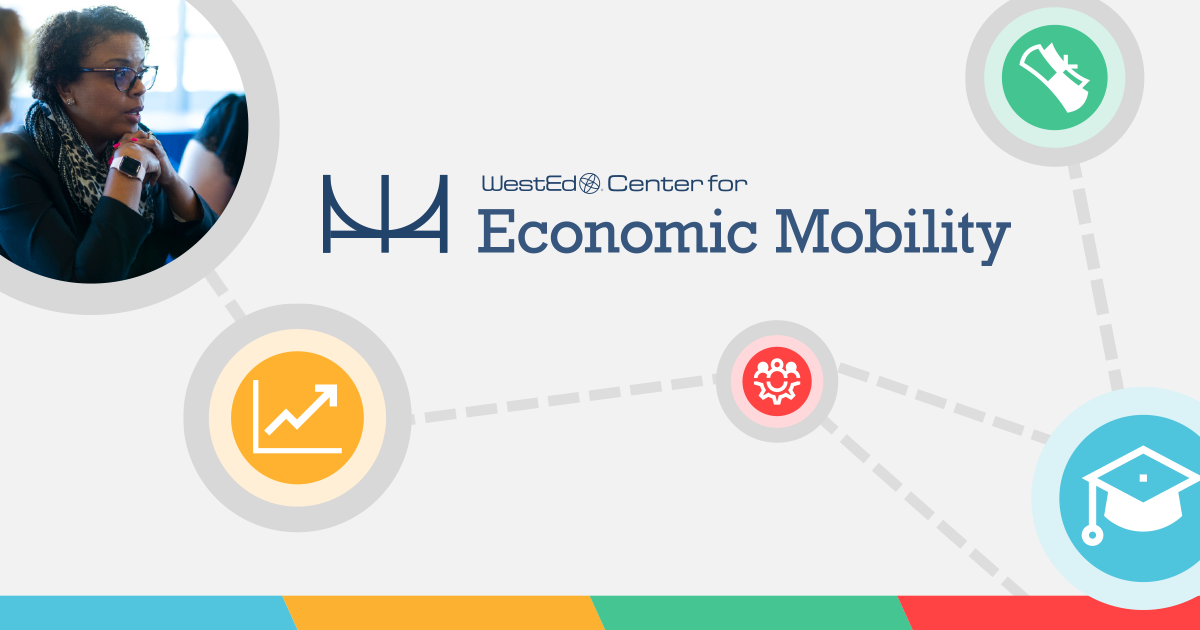
This post was originally published by WestEd’s Center for Economic Mobility.
By Dr. Blaire Toso, PhD
Adult basic education programs—which teach foundational language and literacy skills to adults—help some of the most marginalized learners attain language, literacy, numeracy, digital literacy, and workforce training and preparation skills. Students enroll in adult basic education programs for a variety of reasons, such as to earn a high school equivalency certificate or to learn English. They may also enroll to access training that leads to employment. Regardless of their starting points, adult learners are more likely to attain a living wage if they continue their academic and training journey by transitioning to career and technical education courses and for-credit college courses.
The relationship between postsecondary education, income, and income stability is well established. Each successive credential or degree increases employment and earning potential, particularly for adult learners. However, data on adult learner transitions are sparse. For example, the federal reporting system for adult learners does not systematically collect information on transitions to additional postsecondary education or training that result in academic or industry-recognized credentials. Creating data collection systems that capture transitions data—as well as platforms that provide nuanced analyses using easy-to-understand visualizations—can lead to targeted program planning and funding for adult learners who are seeking a pathway to economic mobility.
California provides one example of the power of tracking adult education transition data. Recently, WestEd’s Center for Economic Mobility explored transition rates for adult learners using data that has been made publicly available in the LaunchBoard Adult Education Pipeline. Among nearly 400,000 students enrolled in adult education in 2019, we found that
- Only one in five students transitioned from adult basic education courses to postsecondary education.
- Adult learners from adult basic education and adult secondary education programs (who tend to be younger) are about twice as likely to transition to postsecondary education as older students in English as a second language programs.
- Adult learner transition rates are higher from adult basic education programs that are offered at community colleges, compared to programs based at K–12 schools, perhaps because being co-located means they have fewer cultural, geographical, and institutional barriers to overcome.
- Transition rates vary by racial and ethnic groups, with the strongest outcomes for Black/African American learners (one in three), followed by White (one in four), and Asian and Hispanic students (one in five).
When states collect and link data on adult learners to better understand their longer-term outcomes, as well as how outcomes vary by specific student populations, they can be more effective at designing interventions that offer greater economic stability and mobility. In addition to California, states like Indiana, Iowa, Louisiana, and Texas collect data on adult education and noncredit programs and could help point the way for similar efforts.
Get inspired by reading a report that summarizes the analysis of California adult education transition rates . Or, visit the LaunchBoard Adult Education Pipeline to explore how transition data can be linked and visualized.
Sign up to receive news from WestEd’s Center for Economic Mobility. Visit economic-mobility.wested.org.

